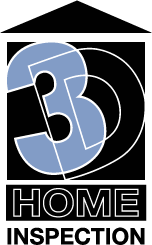House and Attached Garage Fire Separation
In my last two posts on garages, I discussed hazards found in the garage and proper operation of the garage door. The third area I’ll focus on is the fire separation wall between the house and its attached garage. I’m not going to talk about how or why a fire starts in the garage. I’ll just cover what should be in place to protect your home should a fire occur.
Attached Garage Fire Separation Wall vs Firewall
People commonly misuse the word firewall to refer to the wall between the garage and the house. The wall between the house and garage is actually called a fire separation wall, not a firewall.
A firewall is a fire-resistance-rated wall. It extends from foundation to or through the roof. A firewall restricts the spread of fire. It has sufficient structural stability under fire conditions to allow construction on either side of the wall to collapse without the firewall itself collapsing.
A fire separation wall slows the spread of fire and fumes between the attached garage and the house. But it will ultimately fail in a fire. So how does a fire separation wall protect your home? In most cases, it is constructed with gypsum board, commonly called drywall. Depending on the thickness and fire rating, it will retard the spread of fire for 30-60 minutes.
What Should a Home Inspector Look for in an Attached Garage Fire Separation Wall?
Most of the time, a home inspector can’t see the type or thickness of an attached garage’s drywall during a home inspection. Therefore, it’s important for the inspector to determine local code at the time the home was built. That’s generally the only way to ensure the wall will do its job.
In my opinion, drywall seams should be taped and mudded, although local codes may not require it. Homeowners should correct any drywall damage or separation that would allow fire to spread into the house’s interior. There should be no gaps or openings where ducts, vents, pipes, cables, etc., penetrate the wall. Ducts made of 26-gage sheet metal or other approved materials may run through a garage, but they may not open into a garage. Your garage can’t contain flexible ducts. Any wall penetrations also require an approved material to resist the free passage of flame and the products of combustion.
The Role of Doors in Protecting Your Home from Fire Damage
Doors into the house are another means to slow down the spread of fires and fumes. Be aware, you cannot have doors that lead from the garage into a bedroom. Doors from the garage directly into the house need to be one of three types:
- Solid wood, at least 1-3/8″ thick
- Solid or honeycombed core steel, at least 1-3/8″ thick
- A 20-minute fire-rated door of any material
Best practices for garage-to-house doors have changed over the years. Currently, experts recommend:
- Hinges or other mechanism to automatically close the door
- Weather stripping to block fumes.
Homeowners often take garages, their systems and components, and related safety issues for granted. Home inspectors should not overlook these concerns. If you are considering selling your home, a pre-listing home inspection will help you prepare your garage and the remainder of the house to sell.
FOR FURTHER INFORMATION:
According to the U.S. Fire Administration, thousands of garage fires occur every year. These fires result in hundreds of injuries and numerous deaths. You can find more detailed information at Residential Building Garage Fires – US Fire Administration.
Proper fire separation is essential for your safety. You can find more information in Section 302 of the IRC (International Residence Code).
